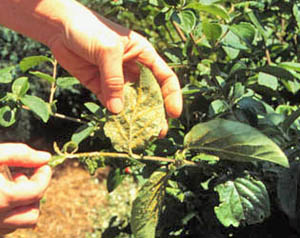Aphids


Adults may be winged or wingless. The size of most mature aphid species varies from 1/16 to 1/8 inch long. The body is oval to pear-shaped with two tube-like cornicles on the abdomen. Colors are usually green, yellow, orange, red, black, or white. Aphids have several generations a year and overwinter on plants as eggs. Feeding aphids excrete honeydew on which black, sooty mold may grow.
In spring, look at new growth for curled, discolored leaves. Aphids typically cluster on the top side of curled leaves where white shed skins may be seen more easily than the aphids themselves. In summer, light-colored aphids feed on veins on the lower surface of mature leaves. Look for honeydew and sooty mold. If these are present, but aphids, are not on leaves, examine the bark for dark-colored aphids. Also look for the presence and relative numbers of predators and parasitized aphids (mummies).
If excessive honeydew is objectionable, use oil or soap sprays when predators and parasites are present on most terminals and leaves are not curled. Residual or systemic insecticides may be sprayed if leaf curl becomes objectionable, but the use of these insecticides may eliminate beneficials for some time. Dormant oil sprays may be applied when large numbers of overwintering eggs are detected.
